
Sungrow is either the largest or second-largest solar inverter manufacturer in the world. They’re duking it out with Huawei, and it isn’t clear who’s winning.
Sungrow has a range of residential inverters we consider reliable and well-supported in Australia, and are one of the dozen manufacturers we recommend using. This article will be a deep dive into the details of their residential inverters.
Well, it’s supposed to be a deep dive, but there’s a limit to how deep I can go in an article covering a variety of inverters. As there’s no chance of me going deep enough to get the bends in a couple of thousand words, this will be more of a “beneath the surface” look. If the words “Deep Dive” are in the article title anyway, you’ll know I’m in the pocket of big diving board.
In this article, I will…
- Tell you a bit about Sungrow and how huge they are.
- Try to convey how horribly designed Sungrow’s website is.
- Tell you a little about the five Sungrow residential inverters sold in Australia.
- Cover what feature these inverters have in common.
- Explain why Sungrow is one of the inverter manufacturers we recommend.
What The Hell Is Sungrow?
Sungrow is a giant company. In 2021 they were the world’s largest solar inverter manufacturer. Last year they were only beaten by Huawei. This year, it’s up in the air. In 2021 they shipped 47GW (gigawatts) of solar inverters or around 30% of world production. That’s almost two kilowatts (kW) of capacity per Australian.
Most were for large solar farms, but they also produced 50,000 string inverters for residential and commercial use. Sungrow says it now has 145GW of annual inverter production capacity. This massive increase from 2021 seems absolutely bonkers, but the rate of growth in solar panel production — a 46% increase between 2021 and 2022 — is bonkers, in a good way, and someone has to make the inverters for them.
Sungrow’s other activities include making electrical conditioning equipment for wind farms and building battery storage systems. Their battery systems range from utility-scale down to the residential Sungrow battery, which is growing in market share here in Australia. This year it took first place in the SolarQuotes Installer’s Choice Battery Awards for Best Value Battery.
Sungrow headquarters are in Hefei, a Chinese city of around 9 million located 400km inland from Shanghai. Most of their production is in China, but they also have a factory in India and another in Thailand, each with around 10GW of annual inverter production capacity.
Sungrow’s financial position is currently sound, so they’re likely to be around to support their warranties for many years to come. For four years, they’ve come out on top of the BloombergNEF PV module and inverter Bankability Survey. This doesn’t mean they can’t have financial problems in the future, but this result is much better than coming last.

I’m glad to hear that because if your goal was to promote fossil fuel use, you’ve been going about it the completely wrong way.
So far, I’ve painted a pretty rosy picture, but I’m afraid all the news I have about this company is not good. Companies that expand rapidly often suffer growing pains and neglect vital areas. I found a weak spot and it’s not just a spot, but a blotch. It’s not really an Achilles heel, as it’s not likely to bring this giant down1, but Sungrow’s website is godawful.
Sungrow’s Godawful Website
When you’re a huge company like Sungrow manufacturing a wide range of electrical products, making your website accessible for those who just want to look at a small portion of your product range is a challenge. Sungrow solves this by making their website horrible for everyone, no matter what they’re interested in.
It’s so bad that, at first, I thought they were deliberately trying to hide information from me. But then I remembered Hanlon’s Razor, also known as Occam’s Lobotomy, which states, “Never ascribe to malice what can be explained by human incompetence”.
Perhaps younger people who grew up with technology such as the internet, or transistors, or flint tools will have an easier time finding information than I did. But Sungrow should keep in mind that at least 10% of the people using their site will be as thick as I am, and losing 10% of your potential customers has consequences. And if they complain to their thick friends they could double their losses and lose 1,010% of thickies.
Not even a choppy video I found on their site called, “Sunflower Military Training” made up for the lousy design.
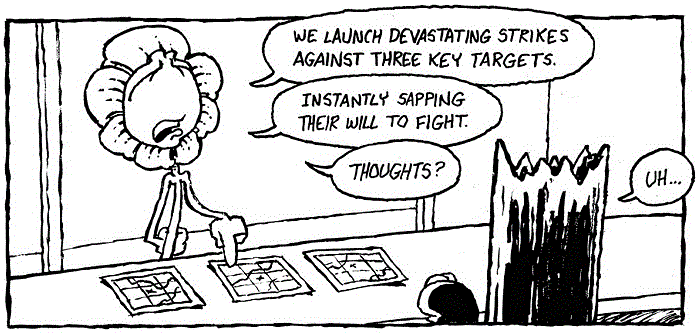
Tragically, it was nothing at all like Bob the Angry Flower.
Australia: A Sungrow Favored Nation
Sungrow currently makes five residential inverter models and two commercial models. Out of the 34 or so countries Sungrow currently sells inverters to, only three can have all seven of them without meeting any special requirements. These are Australia, New Zealand, and the accursed Netherlands.
Sungrow’s Residential Inverters
Sungrow’s five residential inverters are…
- Single phase SG2.0RS-S with 1 MPPT and the larger SG3.0/5.0RS with 2 MPPT
- Single phase SG5.0/SG8.0/10RS-ADA
- Three phase SG5.0/7.0/8.0/10RT
- Single phase hybrid battery inverter SH5.0/6.0RS
- Three phase hybrid battery inverter SH5.0/10RT2
At this time some of their older “D” series or “Premium” inverters are still being sold and installed in Australia, such as the SG5K-D and SG8K-D. These older models have been discontinued, but as far as I am aware there’s no problem with them. All else equal, I’d prefer a newer model because I assume Sungrow will improve their inverters over time rather than get worse. But if you are offered one over the next couple of months there’s probably no need to be concerned about its quality. But if you are offered one in six months without an explanation, I would definitely be concerned.
I’ll briefly describe each of the four most common current models below and then describe features they have in common. I’ll also include links to their datasheets and installation manuals, and videos. If I can spare just one of you the horror of using the Sungrow website, my life will have had some meaning.
SG2.0RS-S — Single Phase, Single MPP
This Sungrow inverter is only 2 kW. Inverters this small are rarely sold these days, but sometimes people just want a small system for a limited amount of roof space or they want a replacement inverter for an old, small solar power system.
It’s single phase and only has a single Multiple Power Point Tracker or MPPT. This means — under normal circumstances — it can only have one array of panels all facing in the same direction. Physically, it’s very small and only weighs 6kg. Sungrow says it’s the size of a sheet of A4 paper, but don’t mention that it’s about 1,000 sheets thick.
- SG2.0RS-S Datasheet
- Installation Manual
- CGI Installation Video (Non-CGI, real-life installations, may not go quite this smoothly.)
The larger versions of this model get their own entry below.
SG3.0/5.0RS — Single Phase, Dual MPPT
This is a single-phase inverter with two MPPTs, the most common number. This allows two independent arrays of solar panels that face different directions. Under the right circumstances, it’s possible to have two arrays of panels facing different directions attached to one MPPT, but for most installations, the number of MPPTs will be the limit.
- SG3.0/5.0RS Datasheet
- Installation Manual
- CGI Installation Video (In real life, it may not go quite this smoothly.)
SG5.0/SG8.0/10RS-ADA — Single Phase, Triple MPPT
This is another single-phase Sungrow inverter, but this one has three MPPTs instead of the usual two. The extra MPPT makes it relatively easy to install it with three arrays of panels, all facing different directions. This makes it possible for a roof to have panels facing north, east, and west. If one of those directions isn’t suitable for solar, panels can be placed facing south. While they’ll generate less energy over the year — especially in winter — the low cost of solar panels can make them more than worthwhile.
Inverters such as Fronius and SMA are flexible, and it’s relatively easy to place two arrays of panels facing different directions on one MPPT. But Sungrow appears to find it easier to produce an inverter with an extra MPPT. I’d call this a valid design approach.
SG5.0/7.0/8.0/10RT — Three Phase, Dual MPPT
This is a three-phase inverter with two MPPTs. Three-phase properties don’t have to use three-phase inverters but I generally recommend using one unless there are special circumstances to consider such as a battery installation.
- SG5.0/7.0/8.0/10RT Datasheet
- Three phase inverter Installation Manual.
- Real Life Sungrow installation video on an ugly wall.
SH5.0/6.0RS — Single Phase, Dual MPPT, Hybrid Battery Inverter
This single-phase inverter is a hybrid that can support a battery. While its datasheet doesn’t specify it must be used with the Sungrow battery, that is what it will mostly be paired with. When a blackout occurs, it can supply backup power in under 10 milliseconds. It can also supply a considerable amount of backup power, as even the 5kW solar inverter version can supply up to 6kW of power from the battery3. In the future, we’ll get around to writing about the Sungrow battery and no doubt give you more details on this inverter then.
SH10.0RT
This is a three phase hybrid battery inverter.
Features In Common
Below I’ll go over features these Sungrow inverters mostly have in common:
- Maximum solar panel DC power in compared to maximum household AC power out
- Efficiency
- Temperature range
- Noise
- LED readouts
- Integrated Solar Analytics
- All made in China
Solar DC In & Household AC Out Ratio
Thanks to how Australia’s financial incentive for solar power works, for most rooftop systems it’s only practical to install solar panel capacity that’s a maximum of 133% of the inverter capacity. This has resulted in many manufacturers producing inverters that can only accept that much extra panel capacity. But nearly all Sungrow residential inverters can accept a solar panel capacity that’s 150% the inverter capacity.
The exception to this is the SH5.0/6.0RS hybrid inverter. The 5kW version can accept 240%, while the 6kW one can accept 217%. This is very useful if you are installing solar and a battery at the same time, as it can let you get around the usual 133% limit on solar panel capacity. In the middle of sunny days this may result in the solar panels producing more DC energy than the inverter can supply as the AC power households use, but storing the excess energy in the battery is an option.
Sungrow Inverter Efficiency
The average efficiency of Sungrow residential inverters — going by the European standard — ranges from 96.9% to 97.9%. This is good, but not quite the highest available. But rather than chasing a tiny improvement in inverter efficiency, many people will be better off installing a larger solar power system.
Location
Sungrow residential inverters can be located indoors or outdoors. But most installation manuals say they must not be located in direct sun or exposed to rain. However, for the SH5.0/6.0RS hybrid inverter, it’s a recommendation as its manual says:
“Inverters free from direct sunlight, direct rain and snow have longer service life. Consider sheltered places as the installation location.”
Temperature Range
Their operating temperature range is from -25° to 60°. This is a good range for Australia. While I’d be surprised if we ever experience temperatures below -25°, it won’t be that long before an Australian capital suffers a 50° or higher heatwave. We’ll want rooftop solar energy to continue to help power our air conditioners when that happens.
The inverters will derate and reduce the maximum energy they can supply before the temperature reaches 60°. Sungrow’s larger inverters don’t derate until the air temperature is over 50° — provided they are in the shade:
But because the datasheets of their residential inverters don’t say what temperature they derate at, I assume it’s still the same as for older Sungrow inverters, which was 45°. This appears to be all Sungrow will commit to in their promotional videos:
But because heatwave temperatures are usually highest around mid-afternoon when solar energy output has declined from its peak, this should not be a major problem for most Australians — provided the inverter is located out of direct sunlight.
They Have Readouts
Many manufacturers have given up on putting screens on their solar inverters, but Sungrow residential inverters all have LED readouts. These are different from LCD screens, which tend to have a high failure rate. I like the fact they have readouts because they’re convenient, and they can let you know what’s going on with your inverter if the wireless connection fails.
Noise
Sungrow’s datasheets only provide the noise level for their residential hybrid inverter. It states its typical noise level at under 45 decibels. That’s around the level of a modern fridge. It’s not very loud, but louder than you might expect from an inverter that claims to be naturally cooled. While Sungrow inverters don’t have external fans, which can be noisy, they do have a small internal fan — exactly like in a computer — that contributes to the noise it makes. Note they should make no noise at night — unless it’s a hybrid inverter connected to a battery.
Integrated Solar Analytics
Sungrow, Fronius, and Goodwe inverters now have Solar Analytics monitoring capability built in. While you’ll still have to pay for a subscription, there’s no need to pay for Solar Analytics hardware and its installation. Provided you’re not completely skint, I recommend it for most people as it will let you clearly see what’s going on with your solar power system, and Solar Analytics will send you alerts if they detect a problem. You can also get it free for 30 days if you want to try it out.
Made In China
Sungrow residential inverters are made in China. This isn’t surprising; most are. But I do appreciate how their datasheets clearly state where they’re made. Many inverter datasheets either try to hide this information or don’t include it at all. I disapprove of trying to hide your origins. After all, despite how intensely shameful it is, I’ve never hidden the fact I’m half Dutch.
Warranty
Sungrow inverters are reliable. But they’re not perfect and sometimes fail while under warranty. Fortunately, they have a ten year warranty that covers most parts and labour. This is better than the warranties by most inverter manufacturers. In addition to having a better-than-average warranty, Sungrow has a good reputation for after-sales support and actually meeting their warranty commitments.
Sungrow Inverter Price
Sungrow is one of the dozen solar inverter manufacturers we recommend using. Here’s our recommended chart for inverters from our Solar 101 Guide:
As you can see, Sungrow sits firmly in the middle between lower-cost “entry level” inverters and more expensive “top-end” ones. After crunching some numbers, I can tell you that is more or less correct. It’s pretty much in the middle between an “entry-level” Goodwe and a “top-end” Enphase.
There is little difference in Sungrow inverter prices per watt of capacity whether the inverter is single-phase, three-phase, or has three MPPTs. The exception is the hybrid inverter; you can expect to pay considerably more per watt for that.
A Solid Mid-Range Solar Inverter
Sungrow produces reliable residential inverters with good customer support and a written warranty that’s better than most. Installers tell us Sungrow normally provides them with good warranty support. We consider them good value for money and you could do far worse than installing a Sungrow inverter on your home.
For example, you could try to use the Sungrow website.
Sungrow took out top spot for best value inverter for the third year in the 2023 SQ Installers’ Choice Awards, and second place for best after-sales support. You can compare Sungrow inverter specifications and estimated pricing with other brands on our solar inverter comparison page.
Footnotes
- Technically, if Sungrow is a giant it should be a Talos heel rather than an Achilles heel, but kids these days don’t know who Talos is. Hell, I didn’t even know who Talos was when I was a kid. ↩
- Update 13:40 March 9th 2023: I originally left out the SH5.0/10RT three phase hybrid inverter. I’d like to thank Nigel, who pointed this out in the comments. ↩
- This makes me think the 5kW and 6kW versions are the same thing, except one has had its solar inverter capacity dialled back to 5kW. As this can be necessary to meet solar connection requirements in places such as rural NSW, I’m fine with this. ↩

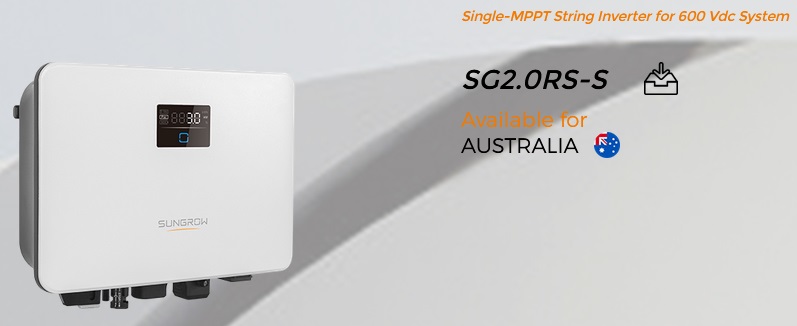
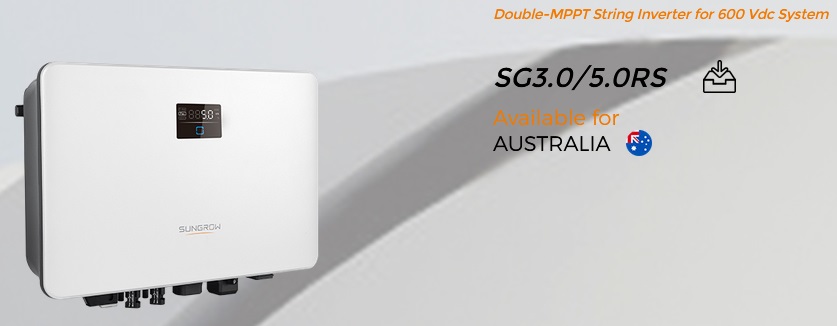
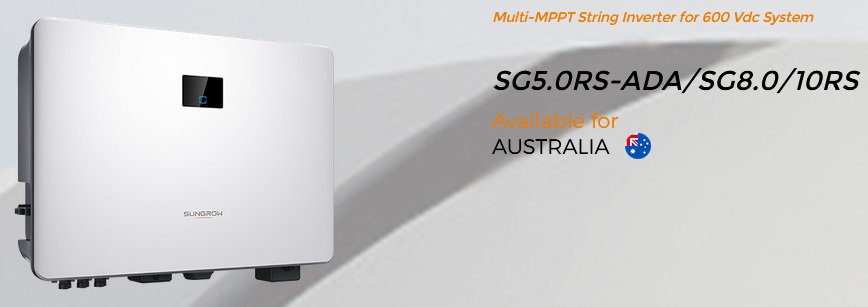
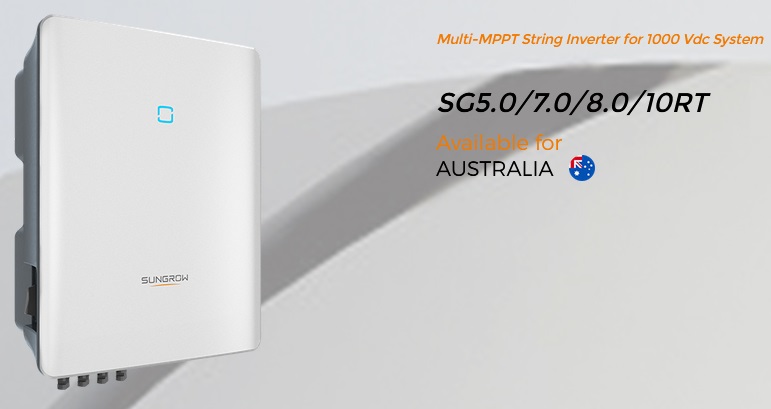
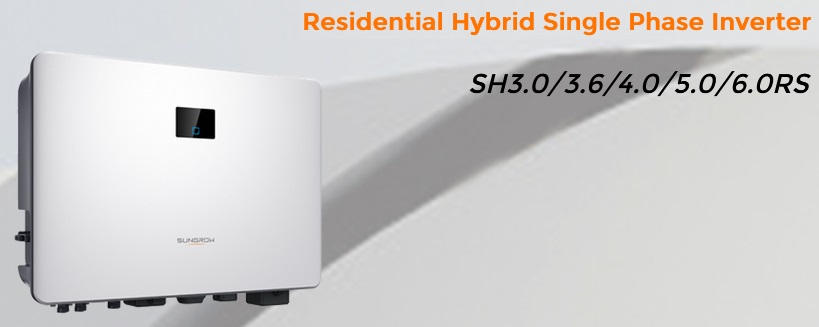
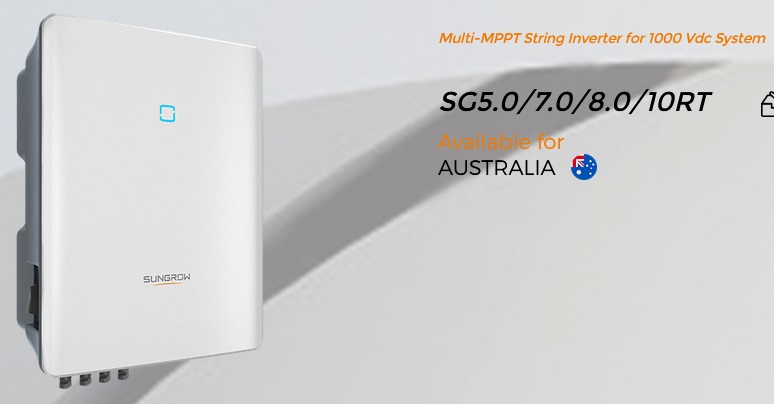
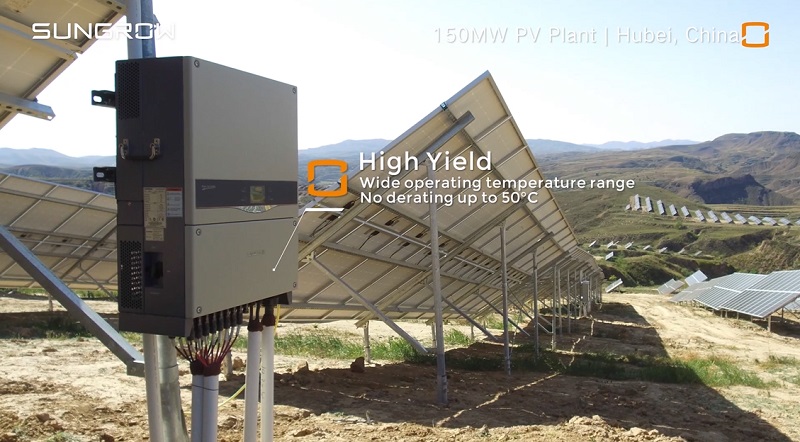
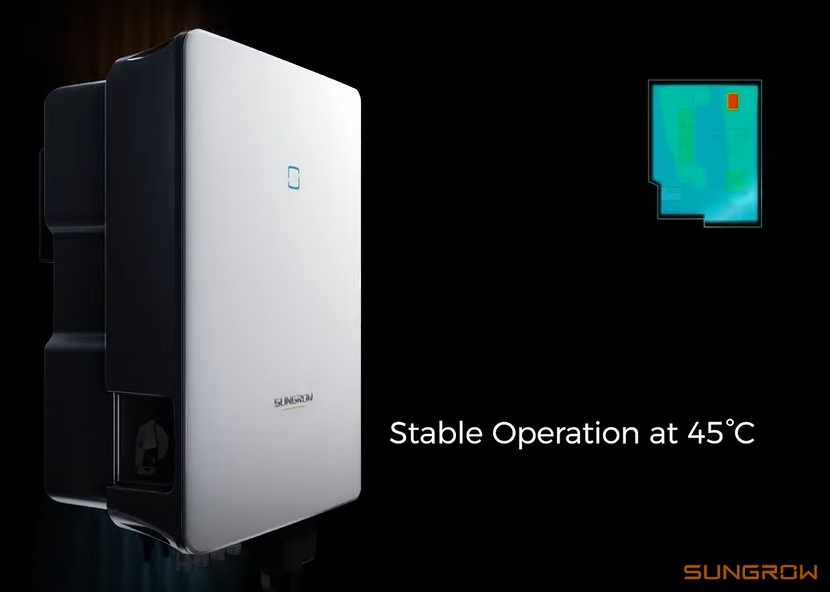
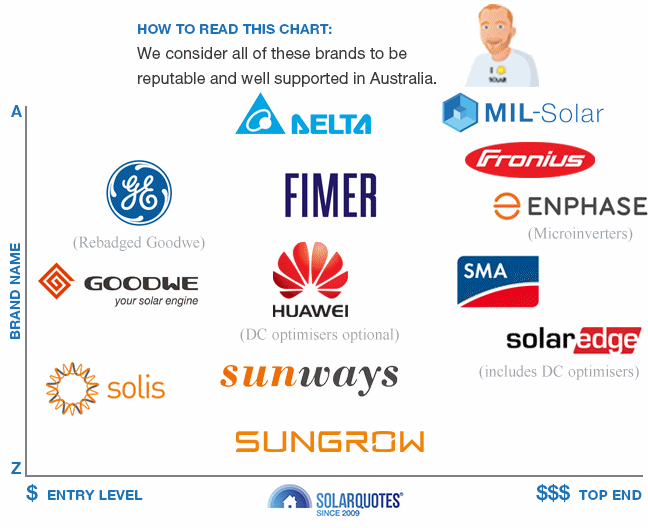
 RSS - Posts
RSS - Posts



We have a Sungrow 5kW hybrid inverter at our rental. The plan was to add a battery one day. Plans change
It is paired with 6.6kW PV installed about 50:50 EW. For the short time I had access to the metering the system had a lovely generation profile
Other than an issue early on that was fixed by the installer via a call to Sungrow it has been working fine for about 6 years now
Hi Ronald
This is a very interesting article, thankyou. We recently completed a new home build and installed a 13.3kW solar PV system with a Sungrow SH-10RT inverter. This is a 10kW 3-phase hybrid battery inverter. However because you don’t mention this range/model in the article, does this mean it has been discontinued?
Our intention is to add a compatible Sungrow battery in the next 12-18 months once Solar Analytics gives us enough insight about the best capacity for our usage patterns (and also once we can afford the outlay). I am just hoping there isn’t a major hardware refresh in that time that restricts the inverter’s compatibility with the Sungrow batteries.
Cheers
Joe
Great Article. One thing I feel that were missed that should be investigated in all inverter/panel branded articles.
Modern Slavery, in today’s world, more and more people are concerned about where the components/raw materials actually come from and the more people are aware that modern slavery exists in the world, the more ask the question, not just commercial customers, but residential too.
Last I’d heard, Sungrow has/had a statement available opposing modern slavery(March 2022).
Another thing, we have found the Wi-Fi monitoring to be excellent, very user friendly with a lot of remote access for installers. Having used most of the big brands(SolarEdge, SMA, Fronius, Enphase, Sungrow, Delta, Solax), I believe Sungrow’s IsolarCloud is the most user friendly(easy to navigate and understand) of the lot. Which is ironic considering just how bad their website actually is!!
Modern Slavery is a very important issue, Jake, and we include information about a company’s position on it in our comparison tables. For example, if you have a look at our inverter comparison table https://www.solarquotes.com.au/inverters/compare/ you can see what we found about each company in a row titled “Modern slavery statement or forced labour policies?”
Brilliant! glad to see. I can see that it is the same in the Panel Comparison table for interested parties. https://www.solarquotes.com.au/panels/comparison/compare-solar-panels/
This is great, manufactures need to declare this. Has Huawei declared if they dont have modern slavery?
The Guardian has raised very serious concerns https://www.theguardian.com/technology/2020/mar/03/tory-mp-asks-bt-using-huawei-complies-anti-slavery-policy
What about the SH5.0/10RT – residential hybrid three phase inverter? Seems to be missing from your assessment, or am I missing something?
Oh! I left it out! That was a big oversight by me. Thanks for letting me know. I’ve added it in. I’d like to blame the fact that I came down with Covid while writing this for overlooking it but, to be completely honest, I can’t be certain I wouldn’t have made that mistake if I’d been in perfect health. But if Finn asks, I’ll blame Covid.
Thanks again for the help.
Thanks Ronald interesting stuff.
Do you ever intend to do a deep dive into the Growatt product range as they seem to be increasing their presence in Australia but not much on the Solarquotes site about them as yet?
Being able to purchase inverters and batteries from a single source is I think quite attractive as it makes any warranty issues a lot simpler to deal with.
I have previously commented on Ronalds’ lack of knowledge and understanding but this article take it to whole new level of incompetence. I understand he had trouble understanding the web site but he should have sought help rather the write rubbish.
He starts by saying there are seven inverters in Aus, 5 residential and two commercial. When I look at their web page for string inverters I see https://aus.sungrowpower.com/ProductsHome/14?cid=16 which shows 14 images of model ranges and from the link suggest there may be 16, Where he got 5 and 2 I have no idea, but I know it is wrong. Aha Solarquotes inverter comparison has five inverter range!
When I look at the range of string inverters on Sungrow web page I see a few are missing. The single phase and 3 phase hybrid inverters are not shown. I have to go to https://aus.sungrowpower.com/ProductsHome/14?cid=16 and then select power conversion system, hybrid inverter, which brings up the single phase and 3 phase hybrid inverters. If he had been able to that and read the specs on the SH10 he would see that it can accept up to 15 kW of panels and additional input from another inverter, the SG10RT for example. This inverter will power up to 4 x 25kWh Sungrow SBR battery series.
I think next time Ronald plans on doing a deep dive he should at least get his head wet.
Hello Trevor
If you look at their configuration guide and scroll down to the APAC region:
https://info-support.sungrowpower.com/application/pdf/2022/06/13/%E5%B7%B2%E8%A7%A3%E5%AF%86(20220613112718)Information%20of%20country%20setting.pdf
You’ll see that Sungrow groups their residential inverters into 5 different models.
Here’s another link you may find helpful:
https://en.wikipedia.org/wiki/How_to_Win_Friends_and_Influence_People
Nice 🙂
Do you have any deep dive information about Sungrow shade algorithms and performance vs Fronius ?
I am getting quotes from installers supplied by Solar Quotes for a 22.4kWh Sungrow battery one has quoted $21,980 with a SH6.ORS the other $17,773 with a SH5.ORS You suggest footnote 3 they are the same. Saving $4,207 with the SH5 sees to be a good decision
Just reading though the above article and noted a figure of 45F stable operation advertised. I have a 10kw with 3 strings in a double garage that sits in the mid 70s for several hours a day. Do these de-rate?
Unfortunately, I don’t think these inverters like (SG5.0/SG8.0/10RS-ADA — Single Phase, Triple MPPT) are suitably rated for the tropics.
In Qld in October (Spring), the internal temperature sits at up to 80 Deg C. Even though it derates above 60 C.
Adding a large fan still only drops it to around 65 C.
They do not appear to have a large enough heatsink for locations where it does not snow!
Incidently, I note that the recent incarnations of the iSolar app no longer shows internal temperature!
Is this deceit by obfuscation?
Don’t believe the electronics internally will live past warranty period!
Hot summer in Cleveland Qld with 10kw Sungrow 4 string hybrid inverter in garage. The extremely hot operation caused by very poor “natural” cooling capacity of the inverter is disconcerting. There is a remedy. The inverter needs to have a modified mounting bracket that sets the outer edges of the inverter cooling fins by at least 40 mm and preferably 50 mm out from the wall, so that effective forced air cooling can be utilized. Note that the bracket must not impede the airflow, thus be made of flat steel, to ensure that airflow is not impeded. Then a small electric fan such as a 40 cm 240v ac desk type or floor fan is positioned below the inverter that blasts air up and behind the inverter to extract max heat from the cooling fins. With this arrangement, my inverter internal temperature is kept below 45C most of the time and never above 50C. Internal temperatures without this arrangement were pushing close to 100C.
Hi Peter,
Glad to see you have a solution. I know some people have been retrofitting computer fans on inverters for years.
The last 15kW Sungrow 3ph unit I installed had a fan fitted from factory.
(Fronius must be on to something 😉
Hi Peter
I’m about to buy the same inverter… 10kW SH8.0/10RS with 4 strings.
In Melb, and will be installed on south side of house under the eaves, so in shade…
But still worried about how hot it might get… and the de-rating that could occur..
So saving your comment so I can check the installers when they come.
Thanks
Willem